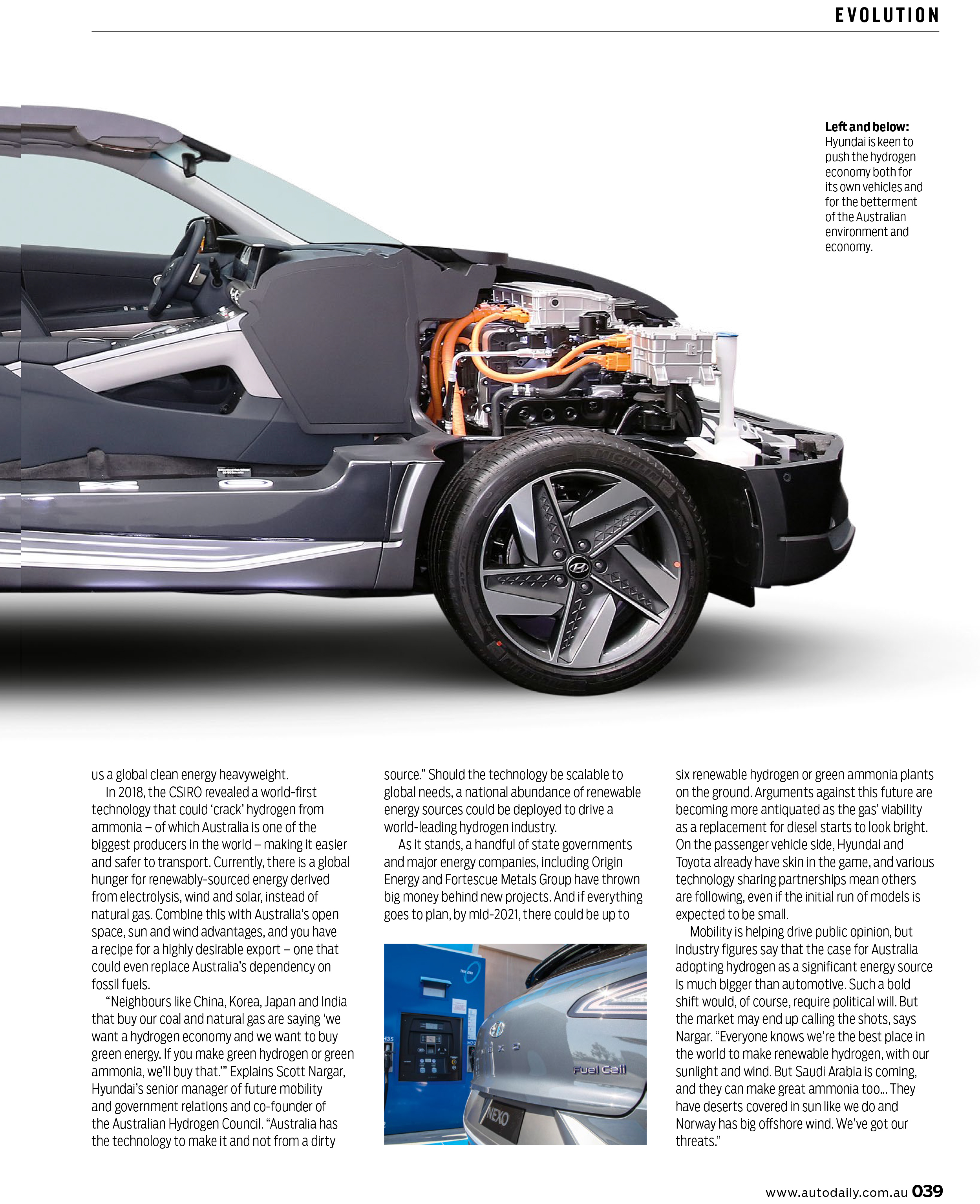
Why Australia is in a unique position to supply the world with sustainably-sourced hydrogen.
evo Magazine Australia, January 2020 (PDF)
Every internal combustion engine in history is bound through the ages to the energetic grandeur of hydrogen. This lighter-than-air, flammable gas powered François Isaac de Rivaz’s nascent ‘automobile’ more than 200 years ago. It may have taken some time, but the universe’s most abundant gas is igniting the green revolution Australia’s been waiting for.
Hydrogen is proving itself to have potential to not only reduce emissions, but make us a global clean energy heavyweight.
In 2018, the CSIRO revealed a world-first technology that could ‘crack’ hydrogen from ammonia – of which Australia is one of the biggest producers in the world – making it easier and safer to transport. Currently, there is a global hunger for renewably-sourced energy derived from electrolysis, wind and solar, instead of natural gas. Combine this with Australia’s open space, sun and wind advantages, and you have a recipe for a highly desirable export – one that could even replace Australia’s dependency on fossil fuels.
“Neighbours like China, Korea, Japan and India that buy our coal and natural gas are saying ‘we want a hydrogen economy and we want to buy green energy. If you make green hydrogen or green ammonia, we’ll buy that.’” Explains Scott Nargar, Hyundai’s senior manager of future mobility and government relations and co-founder of the Australian Hydrogen Council. “Australia has the technology to make it and not from a dirty source.” Should the technology be scalable to global needs, a national abundance of renewable energy sources could be deployed to drive a world-leading hydrogen industry.
As it stands, a handful of state governments and major energy companies, including Origin Energy and Fortescue Metals Group have thrown big money behind new projects. And if everything goes to plan, by mid-2021, there could be up to six renewable hydrogen or green ammonia plants on the ground. Arguments against this future are becoming more antiquated as the gas’ viability as a replacement for diesel starts to look bright. On the passenger vehicle side, Hyundai and Toyota already have skin in the game, and various technology sharing partnerships mean others are following, even if the initial run of models is expected to be small.
Mobility is helping drive public opinion, but industry figures say that the case for Australia adopting hydrogen as a significant energy source is much bigger than automotive. Such a bold shift would, of course, require political will. But the market may end up calling the shots, says Nargar. “Everyone knows we’re the best place in the world to make renewable hydrogen, with our sunlight and wind. But Saudi Arabia is coming, and they can make great ammonia too... They have deserts covered in sun like we do and Norway has big offshore wind. We’ve got our threats.”

